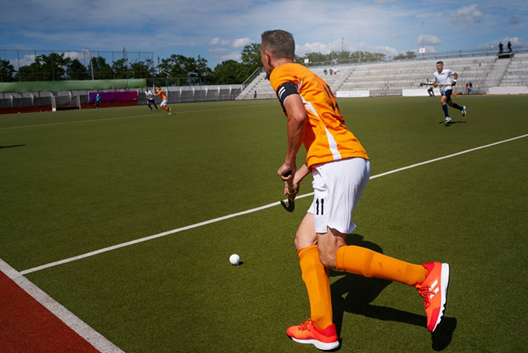The tactical concept known as “false nine” exists at the most advanced level of football positions. Football managers use this positioning not merely as an attacking spot but as an offensive technological breakthrough. The offensively positioned player disrupts the defense while invoking opponent movement and space clearance. The strategic approach modified team offensive methods. This article examines the innovative “false nine” role transforming contemporary football accomplished practitioners.
Origins of the False Nine
Rigid formations ruled the soccer field in the middle of the 20th century. Coaches used creativity to find breaks through defensive opposition lines. Hungary’s “Golden Team” introduced Nándor Hidegkuti to deep positions during the 1950s to make their opponents uncertain. Opponents became confused when this approach came out of nowhere, and it merged to bring new changes to how football functioned. For fans today, analyzing tactics like these or enjoying modern football strategies can be done effortlessly using tools like Melbet apk download to stay updated and engaged. This app ensures you never miss the action, offering insights into the most thrilling moments of the game.

The formation known as the False Nine developed throughout different years. Coach Pep Guardiola developed this concept to suit contemporary football operations. As the false forward evolved beyond traditional forward roles, the player absorbed midfield responsibilities while remaining a playmaker and goal-scoring threat. The tactical approach united distinct awareness elements with strategic positioning and exact movements to deliver unprecedented defensive challenges.
Iconic Players Who Redefined the Role
Several players took the false nine and elevated it to legendary status. These individuals shaped football’s tactical landscape:
- Lionel Messi: Under Pep Guardiola’s leadership, Barcelona transformed Lionel Messi into their definitive false nine. Each forward movement and deep position from him resulted in an unbeatable combination.
- Francesco Totti: The Roma legend transformed this tactical position by redefining Serie A with elegant finishing abilities.
- Cesc Fàbregas: During Spain’s Euro 2012 campaign, he demonstrated flexible adaptation while playing in the false nine position.
These trailblazers improved their teams through their innovations and changed football gameplay worldwide.
How the False Nine Functions in Systems
Implementing this approach requires intelligence and flexibility. A False Nine player must understand game dynamics and manipulate opponents to create space before creating smooth tactical linkages. This method allows coaches to achieve defensive penetration and establish control over the game. Tactical football has received a complete revolution thanks to this dynamic weapon, which formed its core foundations.
Influence on Midfield Play
The false nine positions provide valuable options for midfield players when used correctly. The player’s movement into deeper areas adds another passing choice, enabling better control over game speed. Fans keen to discuss and explore such tactics further can join communities like Melbet Sri Lanka, where enthusiasts share insights and stay updated on the latest football strategies. Because of their motion, these players create openings that central midfielders can use to advance defensive formations, thus creating disorder.
This adaptive system transforms rigid positional thinking into flexible playing patterns. When the false nine operates between midfield and striker roles, it spreads defense while alerting midfielders to shifting positions. The system functions best when players demonstrate pinpoint accuracy while making swift choices and continuous creativity.

Impact on Opponent Defenses
A defense that tries to stop a false nine players becomes an impossible challenge. When this player operates, they break traditional defensive expectations since they continuously move around the field. Through their movement, false nines create space for attacking wingers and midfielders to run into.
This approach forces defenders to make choices: They must choose between tracking the False Nine or maintaining a defensive position. Either option leaves vulnerabilities. Because of its unpredictable movements, this role is football’s most potent defensive-breaking tool. The strategic concept transforms matches at the professional level.
Variations of the False Nine in Modern Teams
Modern football showcases multiple interpretations of the false nine. The different implementations of this system depend on how teams organize their tactical philosophy. Within Pep Guardiola’s tactical framework, the false nine exists to maintain control of the ball by serving as a connector between teammates while constantly moving throughout the field. Under Jürgen Klopp’s system, the false nine functions as a mobile component that presses opponents aggressively and makes strategic errors.
During Euro 2012, Spain adopted midfielders as false nine strategists, who operated for control rather than conventional attacking maneuvers. The role provides unexpected situations because of its adaptive structure. The False Nine maintains control of possession and creates rapid shifts through defenses because of its ability to adjust perfectly to modern football tactical needs.
The Future of False Nines in Football
The False Nine Formation shows no sign of disappearing; instead, it transforms according to modern football requirements. As teams continue their development, this role will integrate creativity and versatility. The future looks promising as players João Félix and Kai Havertz can unite midfielder, striker, and winger skills into one position. Football’s strategic developments reserve ongoing space for the novel beauty of the False Nine system.
